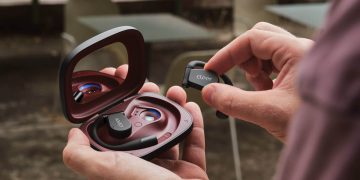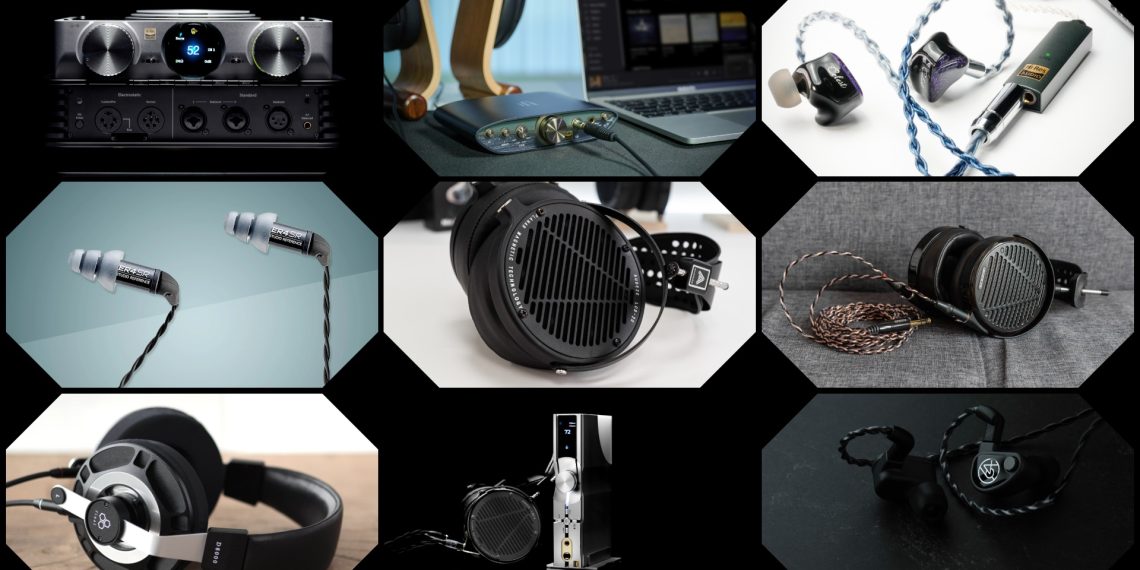Cypher Labs is well known for producing seemingly military grade gadgets for uncompromising audiophiles on the go, but it looks as if the dedication of such users needn’t grow with the passage of time. With the Cypher Labs Theorem 720, digital to analogue conversion AND amplification are taken care of within one handy unit.
First Impressions
The Theorem comes in much the same packaging as its recent predecessors; good for getting the product to you, but likely to turn dog-eared before long if used for storing the item between sessions. There’s a booklet with a few FAQ-type questions and answers, perfect for those who like to get stuck in. I had this unit for the weekend, but was unable to charge it – it is distributed within the UK along with its default 2-pin US plug. Any orders from hifiheadphones.co.uk will of course be shipped with an extra UK-specific power supply.
As luck would have it though, the battery was well charged enough already and I was able to sample the unit both as an DAC with an iPod, and as a PC DAC. The unit comes with connectors for use with the Apple iPhone 5, iPhone 4(s) and some Android devices; depending on software the Theorem can be a DAC for HTC and Samsung models, for instance. I tried to get some functionality on my Huawei handset, but the recommended software is not compatible with my firmware so that was that. Indeed, for supported devices there is a charge for the full version of the suggested app on the Google play store.
The Theorem is built very well and like other Cypher Labs products, it feels as if it wouldn’t be out of place clipped to the side of an Abrams tank. I was careful not to drop it for fear of damaging the floor.
Uses & Features
Now that amplification is a part of what Cypher Labs does, I was looking forward to trying the Theorem as a plain headphone amp with my Walkman before delving any deeper. However there is no ‘Line-in’ socket which was a tad disappointing, and I returned to the office ipod to provide the audio.
There are 3 gain settings (L,M & H) but with my Phonak PFE 232s, I found myself stuck between the lower two settings. Admittedly the 232s have a 49 ohm impedance which is an unusual number, but the lowest gain setting had me wishing for more headroom, and the medium gain hardly allowed any movement of the volume pot before it got too loud. Also the gain selector switch stands proud slightly – I would feel nervous if using in-ear headphones on the street, it’s easy to imagine the switch getting knocked inadvertently.
The USB input is on the same end of the Theorem as the headphone socket which is a good improvement; should the rig go into a pocket or bag, the cables will not be such a problem.
Sound Quality
With my Phonak PFE 232s the presentation was certainly on the cool side for me, at least with the grey filters in the 232s. I exchanged these for the green filters which cut down a bit on the higher frequencies and tamed the sound. There was an unattractive ‘edge’ to the mid-frequencies which needed attention. Other than this, the presentation was very involving and there was a good amount of soundstage for in-ear headphones.
Leaving the 232s, I tried my old AKG K240 DF studio monitors with a very flat frequency response. I have found these headphones indispensable for mixing and arranging, but generally they aren’t the most fun to listen to. However the Theorem made them sound incredible and brought them up to a decent volume for me. Perhaps a little more headroom would be nice for those quieter recordings, but given that these headphones feature 600 ohms of Austrian intransigence, this is very good going for the Theorem.
Finally I tried the HifiMAN HE-400s which really is a superb match. The relative brightness of the amp (for me) complimented the HE-400’s warm character, and there is more than enough power to drive these orthodynamic headphones to their full potential.
Verdict
An excellent choice for those who will accept no compromise when on the move, and who have headphones which will reveal the extra information which the Theorem can glean. Big pockets are still needed to afford the device and carry it about, but given that it does the same work that two units did formerly, those pockets needn’t get too frayed.
Pros
- One unit instead of two
- Headphone cable/USB connections at the same end of the device
- Good and powerful
Cons
- Gain selector switch can be knocked accidentally
- No 3.5mm Line In socket
- Android devices require a separate app which is not free







 HiFiHeadphones Best Buy list
HiFiHeadphones Best Buy list